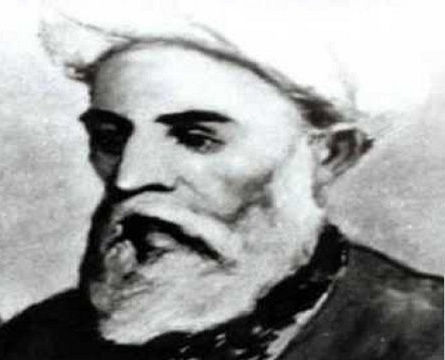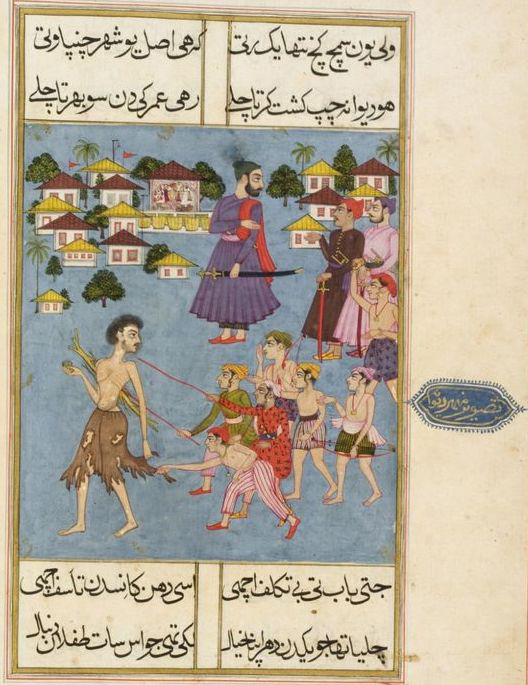[ad_1]
Written by: Ushna Khan
Posted on: March 24, 2020 | 
The Indo-European & Uralic Language Tree
The Urdu language, if combined with Hindi (which is similar in verbal speech but different in written script), falls in the league of the most spoken languages in the world, as much as Mandarin or Spanish. According to a study conducted in Cambridge, Urdu is spoken by around 100 – 240 million people, 10 million in Pakistan who speak Urdu, and 48 million in India who speak Hindi-Urdu. Urdu, in particular, is written from right to left in the Nastaliq script and has 39 alphabets. Before tracing the roots of Urdu, let’s eliminate a few popular myths:
Urdu is the ‘final product’ of a mixture of multiple languages:
Author Adam Rutherford uses the popular analogy of an ape transforming into a human being, to articulate that evolution does not occur in a linear order, but in a random sequence, much like the branches of a tree. Similarly, to understand Urdu we cannot assume that it came together consciously or coherently. We must trace its linguistic branches through visualizing a tree diagram of cultures. Modern Urdu exists in multiple regions of the world, each of which has its own vocabulary and pronunciation.
Urdu is a camp language:
Urdu comes from a Turkish word ‘ordu’, which means ‘camp’. This translation has given birth to an inaccurate assumption that Urdu was a common camp language or lashkari zabaan. To attribute this rich linguistic heritage to clumsily-composed camp language which developed amongst the Mughal armies of the 16th centuries is sacrilege. We can find the earliest trace of Urdu literature in the works of the renowned poet Amir Khusrau (1253 – 1325), who lived in Delhi long before Babur’s arrival in India in 1526.
Arabic, Persian and Turkic were ‘used’ to create Urdu to enable communication between different populations:
Urdu vocabulary is rich with borrowed words from neighboring languages. But this does not signify that these languages were deliberately used to create a new language. This misbelief categorizes Urdu as a pidgin or a creole language (or a simplified language), as argued by Dr. Tariq Rehman. The sophisticated syntax and grammar employed by Urdu are proof of its gradual development over thousands of years.
Let’s cross link words in Urdu to those in other languages:
Urdu is the language of the ‘Mohmeddans’ while Hindi is the language of the Hindus:
This ideology seemed to have developed in the 18th century, with the efforts of the English colonizers attempting to divide and rule. For example, Yule and Bernell (1886) identifies two languages: one is Hindustani spoken by Mohemmadans and other is Hindi spoken by Hindus. These categorizations by colonizers planted the seeds for a religious division by association of language amongst the Indians. Additionally, during the late 19th Century, British Indian documents were in Persian script. But Hindi movements in the late 1800s pushed for Hindi to be written in the Devanagari script, to replace the supposedly Islamic Persian-script Urdu. This political and social tension set the court for the eventual Mohemmdanization of Urdu as a retaliation of this action. However, in 1900 both languages were given equal status in the eyes of the colonial government.
However, to date, communities in both Pakistan and India speak either language, regardless of religion or nationality. While most of Hindi is now increasingly written in Sanskrit, areas of Bihar, Uttar Pradesh, Jharkhand and West Bengal continue to speak Urdu.
You will even find traces of English borrowing from Urdu, which came about in colonial times:
So where does Urdu language actually come from?
Following Gyan Chand Jain’s theory, Urdu and Hindi are in fact one language, their antecedent originate in the various Indic languages of the region. Urdu developed in the 11th and 12th century in Delhi, from locally spoken dialects such as Brij Bhasha, Mewati, Khari Boli and Haryani, which in turn had developed from Apbhransh. Apbhransh is believed to have developed from Prakit languages. Prakit writings have been found on early Asokan pillars of the Mauryan Dynasty in India. However, linguists to date still debate on Urdu’s ancestry. Dr. Jain argues that Kari Boli is Urdu’s immediate antecedent, through which Urdu is connected to Prakit. Prakit works side by side with Sanskrit to understand the development of Urdu language.
Khusrau’s writing in 1317 added to this debate by explaining that only Brahmins knew how to write in Sanskrit; those who broke away from them, developed their own script, which allowed for newer scripts to come about. As stated by poet and critic Shamsur Rahman Faruqi, Hindi was lucky to have the Persian script introduced by Muslims as a way to standardize and record its linguistic history.
Where does the word “Urdu” come from?
“Urdu” as a name for the language, seemed to come into being in 1780, in the verses of Mushafi. This name seems to have developed as part of a larger phrase, ‘zaban-e urdu-e mu’alla -e shahjanabad’ (the language of the exalted city/the court of Shahjanabad i.e. Delhi). By the 18th century the word Urdu meant the city of Delhi. It is possible that when Shah Alam II moved to Delhi in 1772 and used Urdu informally, it became the language around the court. The phrase ‘zaban-e urdu-e mu’alla’ must have come to mean Hindi around 1790-1795. Prior to this, Hindvi, Hindi, Rekhta, Dihlavi, Gujri and Dakani were used to refer to Urdu.
Even though research and debate still continues, one fact that is certain: the rich historicity of Urdu is as deeply embedded in the region, as Sanskrit or any other language in South Asia.
You may also like:
[ad_2]
Source link







